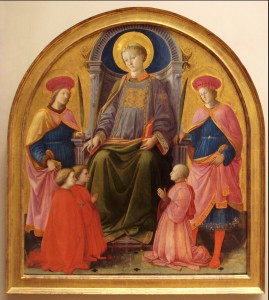It was a gorgeous summer afternoon in New York City when I first visited the Metropolitan Museum of Art. I was accompanied by several students with whom I was attending the Witherspoon Institute’s First Principles seminar.
Although it was my first time at the Met, I was reminded of attending Museum School as a child. For one full week in Grade 3, my class and I had daylong visits to the Glenbow Museum in Calgary where we explored art, artifacts, historical documents, and international collections. We were given journals and encouraged to be careful, curious observers. The goal was to be still and observe with a sense of wonder – and not necessarily to observe everything, but rather to observe a few things well. We were instructed not to race through the exhibits, nodding our heads and saying superficially, “That’s nice.” In short, the most memorable lesson of Museum School was this: “Don’t be a nodder.”
I applied this lesson during my visit to the Met. After a couple of hours in the Greek and Roman section, I made my way to the Christian art. The paintings of Christ, the depictions of Gospel stories, and the images of Christian Saints inspired reflection and meditation. Reading the descriptions next to the paintings, something struck me. Several of the paintings involved the phrase “Saints and Donors” in the titles. Donors? Why donors? What does that mean? I was perplexed. Curiosity overcame me especially because, one week earlier, I had read a poem entitled “The Donor.” I figured that there might be a connection, but I hadn’t understood the whole meaning of the poem, so it remained a mystery.
A friend overheard my questions and explained, “The donors are the ones who pay for the painting. Then they are discreetly included in the painting with the Saints.”
We walked together back to one of the paintings, entitled Saint Lawrence Enthroned with Saints and Donors by Fra Filippo Lippi. Thanks to there being Wi-Fi at the Met, I also looked up the poem, and began reading it again, my eyes alternating between the painting and the lines of poetry:
The Donor
By Rainer Maria Rilke
They put you in the picture if you pay.
So even if you didn’t see the Saviour,
And even if the holy bishop’s hand
Didn’t guide you in devout behaviour
(Kneeling, near the border, looking bland),
In the painting it appeared that way.
That could be the main thing: just to kneel,
So kneeling is the only thing you feel,
So that you keep your self-willed shapes contained
Inside of you, like horses tightly reined,
And find the grace not to expand and steal
The scene. So if enormity takes place,
Something outside the scope of what you learn,
It might just overlook you, cloaked in grace,
And might come near, absorbed with its concerns,
So close you see a thought rise in its face.
Wow! Now this was awesome! Reading Rilke’s poem while beholding an actual image of what it depicted made both the poetry and the art more real to me. I empathized with the donors and thought about how being painted with the Saints might have changed them. A Florentine nobleman was at the height of his political career when he commissioned the painting. He is painted in a lowly pose facing his two sons and kneeling devoutly at the feet of Saints Lawrence, Cosmas and Damian. In being painted “kneeling, near the border, looking bland” the donor is converted to humility. His soul is transformed by the art which is instructive in teaching him to rein in his ambition and not try to steal the glory from God.
The experience of the “turning around” of the soul (as in Plato’s Allegory of the Cave and somewhat connected to conversion in Augustine’s sense) is called periagoge. It’s a word that expresses the soul’s deepening openness to reality inspired by a recognition and affirmation of what is good, true, and beautiful.
The purpose of good art and poetry is for our souls to be turned around from opinion to knowledge, from ugliness to beauty, from darkness to light, from values to virtues, and from untruth toward truth. The Greeks understood art to be an imitation of nature. What does modern art imitate? Does the art, poetry, and music that we experience help us to become educated in such a way that our souls become more open to goodness, beauty, and truth?
How wonderful that this sort of learning can begin with something as simple as trying to “not be a nodder” at the Met.
Gratefully dedicated to my third grade teacher, Josephine Sebben. She taught me to ‘not be a nodder’, encouraged me in attentive observation, and forever inspired me in faith and learning.








